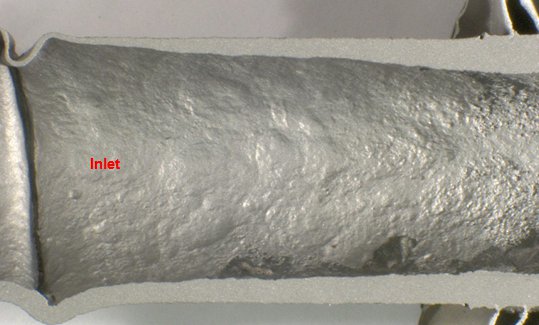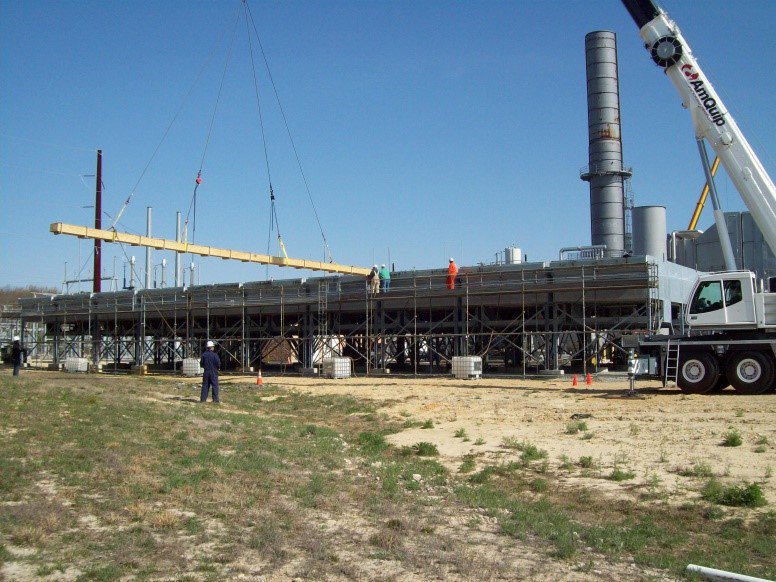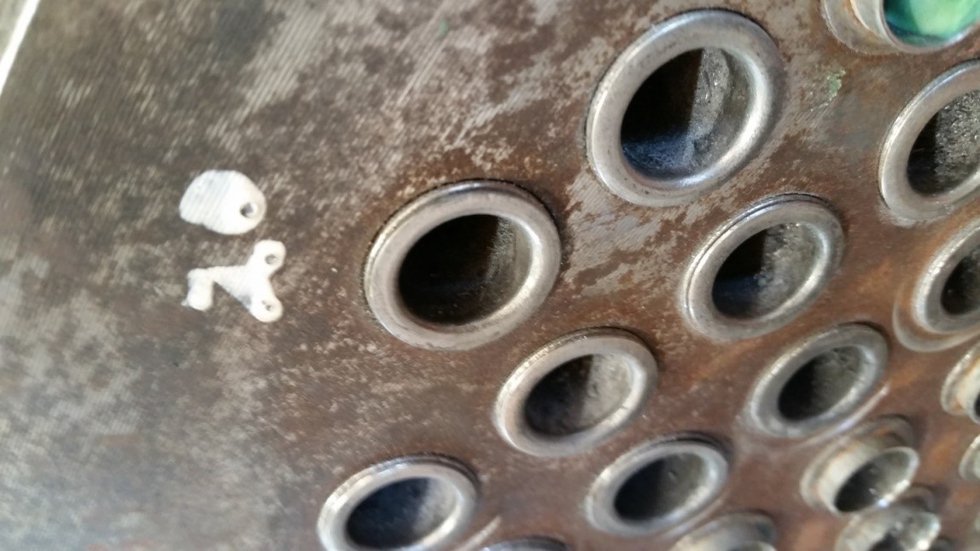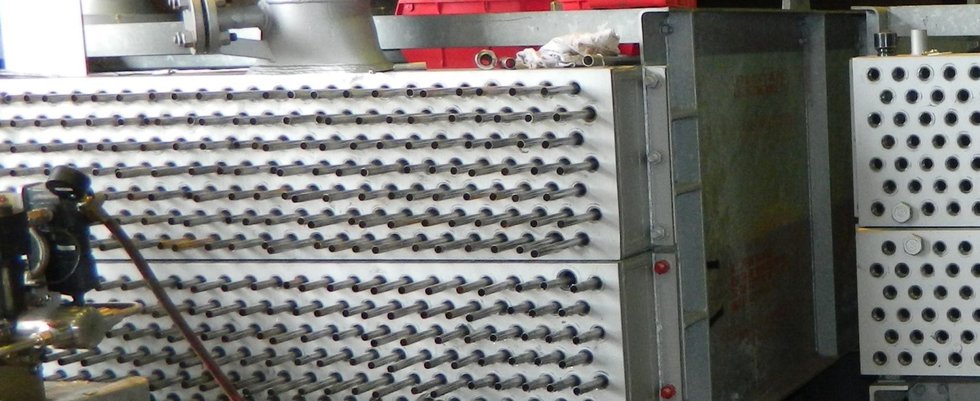NOTE: The sponsor of this content may contact you more information on this topic. Click here to opt out from sharing your email address with this sponsor. By submitting your email address, you will NOT be unsubscribing from the BIC Magazine Industry Connection e-newsletter or any other BIC Alliance email list.
That 3:00 am phone call is not always for the President. It could be your inspection team going over the results of the IRIS inspection on your newest heat exchangers, the ones you purchased only 3 years ago. The news is bad, full length pitting issues have been identified on critical equipment, and your options are extremely limited.
To compensate for the ever changing quality and varying characteristics of hydrocarbons being processed, design changes must be taken into consideration when preparing for tube replacement, or purchasing new equipment. Variables that didn’t exist years ago may now determine the life span of your heat exchanger equipment. Process exchangers that once ran for 40 years may now face the tough task of making it to the next turnaround. Exchangers being inspected during these turnarounds are now subject to shocking results. Inspectors expecting to find very limited or even zero tube defects now must scramble make arrangements for an immediate repair or replacement.
Full Length Tube Liners installed inside carbon steel tubes are the best way to combat tube failures in critical heat exchanger equipment. Thin-walled alloy liners provide protection from corrosion issues that will eventually take place in tubes. CTI Industries, in Orange, Connecticut, developed a tube repair technique in 1976 that today is the most widely used and cost-effective solution in the world, with acceptance in over 50 countries.
CTI receives heat exchanger drawings on a regular basis from clients looking for solutions to tube issues. We are now seeing the “born on” manufacture dates on heat exchanger drawings that are only 2 or 3 years old. We still see the occasional drawings from 30 years ago but those cases are rare. More and more we see tube issues on exchangers that are still infants, never mind teenagers.
CTI recently installed tube liners into four NEW crude overhead shell and tube exchangers for a Gulf Coast refinery. The refinery managers knew from past practice that they could not sustain a 5 year uninterrupted run without tube leaks using carbon steel tubes, no matter how thick they made the tube walls. Tube leaks were inevitable; so the decision was made to have the four new exchangers built at an OEM shop. This refinery’s experience with CTI Tube Liners in air cooled exchanger tubes over the course of several years led them to think out-of-the-box and use the tube liners in the shell and tube crude units to get the five year run.
CTI Industries has over 40 years of experience increasing the reliability of heat exchanger tubes, whether in a new exchanger, or in existing leakers that have been plugged and taken out of service years ago. CTI is now celebrating our 10 year anniversary of NEW installations. In 2006, CTI was contracted by a refinery in California to try and extend the life of their air fin cooler tubes. After two short runs requiring “replace in kind” carbon steel, we installed C276 thin-walled tube liners into the Crude Overheads. As of November 2016, the exchangers are still in service and show no signs of wear!
How is it done? The process begins by properly sizing the Tube Liners to fit the existing tube ID’s. Undersize Liners may not have the expansion capability inside an already eroded/corroded tube ID and conversely, an oversized Liner won’t fit inside the tube, so they really aren’t Liners are they?

The Liners are sized, ordered and shipped to the job-site. Crane service (for in-situ air coolers) is required to get the Liners on a parallel plane with the tubes and manually loaded into the corresponding tubes. Hydraulic expansion is the next step in the installation process, the thin-walled liner is expanded the full length creating a press fit contact throughout the entire span.

Hydraulic expansion of the liner will eliminate any air gap that could exist between the tube ID and Liner. The Liners are then roller expanded in the tube ends at each tubesheet to create a pressure tight seal. All the hydraulic and mechanical expansion that takes place is accomplished using compressed air and water only. An optional two-step flat flare is accomplished to seat the end of the Liners against the tube ends.

The installation process when working though air cooled exchangers with header plug sheets differs from a shell and tube heat exchanger. The Liners must be longer in length to accommodate the header box depths. The tooling must also be capable of reaching through the header plug holes for cutting/trimming and for mechanical expansion of the Liner. Header box depths may vary from a few inches to a couple feet so that means our tooling has to be adaptable to operate in a “no-hands” environment.
Experience plays a major factor when CTI’s crew arrive at a work-site and we are presented with the task of returning a severely damaged tube back to life.

Time and again CTI Industries has raised the bar for Full Length Tube Liner installations. From the north shore of Alaska to Alabama, and from the Canadian Maritimes to the gas plants of Australia, 2016 found CTI crews restoring reliability to heat exchanger tubes. Over 11,000 CTI Tube Liners were successfully installed into both new and previously damaged tubes in 2016. Several contracts will have CTI crisscrossing the globe in 2017 and beyond. Tube Liners will be installed into existing, damaged tubes at an Australian gas plant, into new air fin coolers at a Singapore refinery, at facilities in Peru, France, Japan, China and South Africa, along with numerous projects in the US -- there will be no moss gathering under our feet anytime soon.
CTI can and will respond to that emergency phone call with expedited materials, equipment and crew and get your critical exchangers back to normal operating service. We can also work with your design team on F.E.E.D. or F.E.L. projects to prevent that phone from ringing in the first place.
Contact CTI Industries today to speak with experts who can solve your heat exchanger tube failure problems. Visit the CTI website http://cti-ind.com/contact-us, email KShugrue@cti-ind.com or call +1 760-632-9117.
